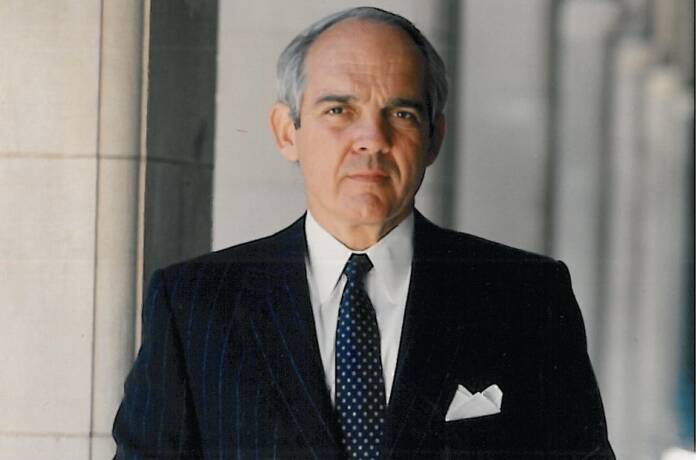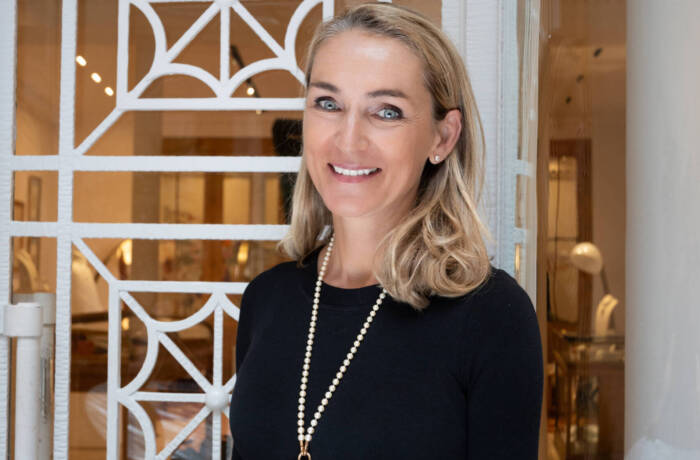THERE ARE CHAMPAGNES, VINTAGE CHAMPAGNES, PRESTIGE CHAMPAGNES, AND, FOR A NUMBER OF CONNOISSEURS, THEN THERE IS KRUG. OUR COLUMNIST, HIMSELF A LEGEND IN THE WINE TRADE, EXAMINES WHAT IT IS THAT MAKES THIS CHAMPAGNE SO SPECIAL
“Bring anything you like as long as it starts with K and ends with G.” So I was instructed before a dinner at which only the best would do and it was up to me to bring champagne. So why is Krug considered by true connoisseurs to be the best among many fine champagne houses? To help answer this question I was invited to Krug on a cold winter morning. In contrast to the many splendid champagne ‘Maisons’ in Reims, France, the Krug headquarters is an unprepossessing building that does not prepare you for the splendours inside. I was invited to a special tasting by Margareth Henriquez, the president of Krug. We were joined at the tasting by Eric Lebel, the chef de cave.
The wines to be tasted were Krug Grande Cuvée, Krug 1996, Krug Clos du Mesnil 1996, Krug Clos d’Ambonnay 1996 and Krug 1998. The wines were very different yet all had some things in common. First was a core of firm acidity, the backbone of Krug. All had a very fine mousse and were wonderfully fresh. All were richly aromatic with multi-faceted flavours that danced across the palate, suggesting perhaps grilled nuts for a moment, then a touch of honey followed by toasted brioche or dark red fruits. The sensations went on and on. All had an impression of size and volume yet were so elegant that the aromas and flavours seemed to be balanced on the point of the finest needle. Finally, a long finish that lasted minutes rather than seconds. The wines could be enjoyed on two levels; immediate pleasure certainly, but they also repaid contemplation when so much more was revealed. They are not showy wines but really quite cerebral.
The two wines closest in style were the Krug Grande Cuvée and the Krug 1996. The Clos du Mesnil, a 100% Chardonnay champagne, reminded me of a young Montrachet, but the flavours were much finer. Totally harmonious, very complex and like a ballerina poised on tip toe, supremely elegant. The Clos d’Ambonnay 1996, made entirely of Pinot Noir, had the same Krug backbone as the Clos du Mesnil but its taste profile was entirely different. The texture silkily smooth, the bouquet and flavours hinting at dark red fruits, a touch of toasted brioche, dark chocolate and as Eric Lebel suggested “that classic burgundian feature, sous bois”. There is no equivalent word in English: ‘boskiness’ gets about 20% of the way there. The richness and power of the fruit perfectly balanced by the firm acidity which is a feature not only of Krug but also of 1996. The taste went on and on, the long finish was of almost symphonic complexity. Among wine snobs it is common to look upon the Grande Cuvée as a sort of entry level Krug, a mere nonvintage wine. This is a great error.
So how does Krug achieve such outstanding quality? Apart from insisting on only the best for every small decision that has to be made during the whole process there are several key factors that elevate Krug above their competitors.
Of utmost importance is the raw material. As their own vineyards provide just 40% of their needs, the remaining 60% have to be bought in. The source of their grapes is not a few very large vineyards but dozens of tiny plots, some no larger than a large garden. Each terroir being subtly different, this brings great complexity to the final blend. The growers keep the yields low and the contracts with Krug often go back many generations. Several growers told me that it is considered an honour to supply Krug with grapes. It should be noted that Krug buy only grapes, never wine. Every parcel bought is kept separate. Many Champagne houses mix the many lots bought in large tanks. Not so at Krug. Amazingly, the grapes from each plot of land from each grower are fermented separately. There is a severe triage and the wines are fermented in old 205 litre oak casks. Krug is the only great Champagne house that still ferments all its wines in oak. The casks are old because the aim is not to add tannins but to allow a slow interaction between the must and the tiny amount of oxygen that the casks allow through. This method ensures a long, slow evolution of the wine and contributes enormously to its legendary longevity. A further contribution to longevity is that the malolactic fermentation is never induced. In March the growers come and taste their wines at Krug. It is quite possible to find, from one grower for example, that one wine is fine and fruity, one more structured while the third is over-ripe. This last wine will be rejected by Krug and sold elsewhere.
The most difficult task of all is the assemblage, especially for the Grande Cuvée. For a vintage Champagne, those casks whose characteristics best represent the unique character of the year will be set aside. But for the Grande Cuvée where consistency is paramount, Krug can call upon its amazing array of reserve wines which are stored in stainless steel. For the blending, Olivier Krug and a tasting committee of seven spend five months with as many as 1000 tastings, seven wines at each tasting. They will have as many as 7000 tasting notes. These are all reviewed by Lebel who will then suggest certain blending combinations to the committee until that special Krug character, taste and quality is achieved.
Krug use about 15-20% Pinot Meunier in their blends. Some find this surprising as it is often considered to be an inferior variety. It was explained to me by Eric Lebel and Margareth Henriquez. “The character of Pinot Meunier is the most variable of the three grape varieties. It is not so much Pinot Meunier per se that we seek but a little touch of spice or fruitiness or je ne sais quoi that a certain grower in a certain village can produce,” said Margareth. It is incidental that it happens to be Pinot Meunier. It also acts to enhance and enrich the other two varieties so that the final blend is a more complex, exciting and harmonious wine.
They have a similar attitude to grand and premier cru rated villages. The tasting committee never discusses the benefits of adding say a little more grand cru village wine, preferring to suggest perhaps a little more Chardonnay from a certain grower in say Trépail for its extra elegance and finesse or a little more Pinot Meunier from a grower in Sainte Gemme whose Pinot Meunier has, say, an extra charm, fruitiness or spiciness. In other words, the grapes used depend solely on their quality and character regardless of what the grape variety is or which village it comes from. There is no formula though it almost always ends up with Pinot Noir being the most used followed by Chardonnay and then by Pinot Meunier.
Krug is not afraid of modernity. They use giro pallets for the riddling of the standard sized bottles but for all other sized bottles the riddling is done traditionally by hand. A rosé wine is also produced as is Krug Collection which is a vintage wine. This is exactly the same wine as the standard vintage wine. However it has been stored in Krug’s cellars for at least 20 years prior to being released. This guarantees the provenance and therefore the freshness and condition of the wine. The actual date when Krug Collection is released depends on when the wine attains a new phase in its life story, a sort of second life when new flavours of maturity emerge. One will pay accordingly.
As Olivier Krug told me, “there are no short cuts to quality and at Krug every tiny detail is carefully considered and has only one aim which is to make the best possible Champagne in that totally unique Krug style”.
Howard Ripley founded his eponymous wine merchant while practicing as a dentist in London. He became a global legend among connoisseurs for his deep relationships with some of the most important producers of Burgundy’s wines.. He is now retired.










